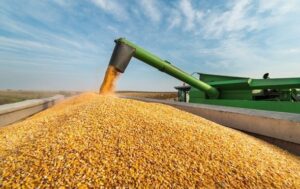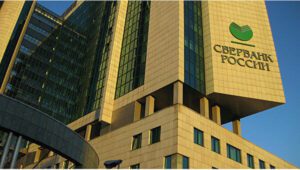
In January-October of this year, enterprises engaged in operations with ferrous scrap increased procurement of scrap metal by 38.2% compared to the same period last year, to 3.444 million tonnes.
According to the recent information of the Ukrainian Association of Secondary Metals (UAVtormet) on Tuesday, export of scrap metal for the specified period amounted to 503,500 tonnes, which is 15.5 times more compared to the same period in 2020 (32,400 tonnes).
At the same time, import of scrap in January-October amounted to 19,800 tonnes, which is 30% more than in January-October 2020 (15,200 tonnes).
Over ten months of 2021, the supply of scrap to the country’s metallurgical enterprises increased by 18.6% compared to the same period last year, to 2.777 million tonnes. The level of scrap metal stocks at metallurgical enterprises as of November 1, 2021 was estimated at 130,000-135,000 tonnes.

Poland has become the main destination country for labour migrants from Ukraine, according to the publication “Migration in Ukraine: Figures and Facts” prepared by the International Organization for Migration, the United Nations Agency for Migration in Ukraine (IOM).
“Emigration to the Czech Republic, Slovakia, and Hungary has increased in a certain way. As before, Poland is the main destination for Ukrainians,” Doctor of Public Administration, expert on migration issues Olena Malynovska said at the presentation of the publication in Kyiv on Friday.
In particular, in 2020, some 1.329 million applications of Polish employers about their intention to employ a citizen of Ukraine were registered. It is estimated that the labor participation of Ukrainians in the Polish economy has provided 13% of its growth in recent years.
“There has been a noticeable increase in the number of applications by Ukrainians to acquire a long-term or permanent permit to stay abroad, in particular in Poland. The pandemic, which limited the possibility for circular migration, that is, periodic trips abroad, has led to an intensification of the tendency for a part of temporary labor migration to become permanent or for a long migration,” Malynovska said.
According to the publication, in 2020, private remittances to Ukraine amounted to $11.888 billion, while foreign direct investment amounted to $868 billion less.
In addition, in 2020, Ukraine issued 12,000 immigration permits and 293,600 permanent residence permits.
“The number of foreign students has been growing, and this is a positive phenomenon, but I want to draw your attention to the fact that last year there was a third less invitations for applicants, that is, the replenishment of the contingent of foreign students last year took place at a lower level. In the coming years, we will have a reduction in the number of foreign students,” Malynovska said.
According to the data indicated in the publication, the number of immigrants on the territory of Ukraine is decreasing, while the number of emigrants is growing. In particular, 4.997 million people of immigrants lived in Ukraine in 2020 (some 6.893 million people in 1990), while 6.139 million people of emigrants from Ukraine lived abroad (some 5.546 million people in 1990).
According to the Ministry of Social Policy of Ukraine, as of July 2021, the total number of internally displaced persons (IDPs) in Ukraine reached 1.474 million people.
The publication informs that in 2020 the population of Ukraine was 41.6 million, while in 2018 the population was 42.4 million. It is noted that in 2020, some 616,800 people died in Ukraine, and 293,400 people were born.
It is indicated that Ukraine’s GDP is still below the 2013 level. In particular, in 2020, Ukraine’s GDP was $142.3 billion, while in 2013 it was $183.3 billion. At the end of 2020, the unemployment rate in Ukraine was 10.1%, which was the highest since 2014. It is noted that the poverty level in Ukraine is 23.3%, below the poverty line are 8.8 million citizens. Previously the Experts Club made an analytical program dedicated to the Ukrainian demography in 1990-2021 period. For more details on the analysis of the demographic situation in Ukraine, see the video posted on the Experts Club channel: https://www.youtube.com/watch?v=Gc04wUpexnE
You can subscribe to the Experts Club channel here.

Ukraine since the beginning of this season and as of October 28 threshed 60.75 million tonnes of main grain and leguminous crops from a total area of 12.86 million hectares (a rise of 4.37 million tonnes in a week from October 21 to October 28), the Ministry of Agrarian Policy and Food reported on its website f on Friday.
According to the report, Kharkiv region with 4.61 million tonnes, as well as Odesa (4.58 million tonnes), Dnipropetrovsk (4.53 million tonnes), Mykolaiv (3.78 million tonnes), Vinnytsia (3.77 million tonnes) and Kherson (3.44 million) regions are leaders in threshing.
In total, 80.19 million tonnes of major grains, legumes, oilseeds (and sugar beets were dug out) from a total area of 20.89 million hectares have been harvested this season (a rise of 5.7 million tonnes in a week).
As the Ministry of Agrarian Policy said, as of the indicated date, 15.62 million tonnes of corn (a rise of 4.47 million tonnes) were harvested from 2.43 million hectares (44% of the forecast) and 13.56 million tonnes of sunflower (a rise of 0.88 million tonnes) from 5.87 million hectares (90% of the forecast).
In addition, farmers harvested 7.76 million tonnes (a rise of 1.53 million tonnes) of sugar beet from 164,630 hectares (73% of the forecast).
The ministry said that a total of 107,500 tonnes (a rise of 1,000 tonnes) of buckwheat was harvested from 81,600 hectares (98% of the forecast), and 178,800 tonnes of millet from 76,300 hectares (98%).
In addition, 3.05 million tonnes of soybeans (a rise of 450,000 tonnes) were harvested from 1.15 million hectares (90% of the forecast).
The Ministry of Agrarian Policy also recalled the completion of work on harvesting rapeseed, which harvested 2.91 million tonnes from an area of 1.01 million hectares.
The average yield of corn as of October 28 was 6.436 tonnes per ha, sunflower – 2.312 tonnes per ha, soybeans – 2.647 tonnes per ha, rapeseed – 2.86 tonnes per ha, sugar beet – 47.113 tonnes per ha, buckwheat – 1.38 tonnes per ha, millet – 2.344 tonnes per ha.

Ferroalloy enterprises of Ukraine in January-September of this year increased their output by 12.5% in total compared to the same period last year, to 668,270 tonnes, including 80,650 tonnes produced in September.
As the Ukrainian Association of Producers of Ferroalloys and Other Electrometallurgical Products told Interfax-Ukraine on Wednesday, in January-September 2021, production of silicon manganese at Zaporizhia (ZFP) and Nikopol (NFP) Ferroalloy Plants increased by 16.6%, to 522,540 tonnes. At the same time, total production of ferromanganese at three plants decreased by 20.7%, to 78,270 tonnes: ZFP, NFP and Kramatorsk Ferroalloy Plant (Kramatorsk plant was idle in January-September 2021, while in the same period of 2020 it produced 34,090 tonnes).
In addition, in Ukraine, production of ferrosilicon (in terms of 45%) increased by 38.3%, to 62,060 tonnes, and metallic manganese – 2.44 times, to 5,400 tonnes.
Pokrov (previously Ordzhonikidze) and Marhanets Mining and Processing Plants (both located in Dnipropetrovsk region) which extract and concentrate manganese ore, in January-September 2021 produced a total of 1.274 million tonnes of manganese concentrate, which 6.6% lower compared to January-September 2020. At the same time, Marhanets Mining produced 418,290 tonnes of concentrate (a decrease by 0.5% compared to the same period in 2020), and Pokrov Mining – 855,870 tonnes (less by 9.3%).
In January-September 2021, Pokrov Mining and Processing Plant also produced 195,040 tonnes of iron ore sinter (up by 63.6% compared to the same period in 2020), supplying it to Dniprovsky Metallurgical Plant (DMZ), part of DCH Steel from DCH Group of businessman Oleksandr Yaroslavsky.

Kyiv authorities will not close public transport in connection with the tightening of quarantine restrictions in the capital, however, passengers will need to provide a certificate of vaccination against coronavirus or a negative PCR test, mayor of Kyiv Vitali Klitschko has said.
“We are not going to close public transport, it will work, but only passengers who have a vaccination certificate or a negative PCR test must travel in it. Documents will be checked not at the entrance to the transport, but by special groups of law enforcement officers on a selective basis,” Klitschko said at a briefing on Thursday.
The mayor stressed that the measures are being introduced because “there are no other options” to save lives and health of people and prevent the collapse of the medical system, which may not withstand a large number of patients.

Sberbank in the third quarter classified the assets of its subsidiary bank in Ukraine as blocked owing to legislative restrictions that do not allow full disposal of these assets, Sberbank said in a statement.
According to Sberbank’s Q3 2021 International Financial Reporting Standards (IFRS) statement, the Russian credit institution is prohibited from transferring funds and other assets of the Ukrainian subsidiary to other companies of the group. Consequently, Sberbank has created reserves for these assets totaling 33.3 billion rubles.
The Supreme Court of Ukraine in August 2021 ruled in favor of Oschadbank, thereby banning the Ukrainian subsidiary of Russia’s largest bank from using the Sberbank trademark in Ukraine.
“We are now considering various options. Perhaps before the New Year, we will come up with a decision; however, unfortunately for now, this is a sore subject for us. Thus far there is no obvious decision,” Sberbank CEO and Chairman of the Executive Board Herman Gref said in September when commenting on the situation.
Gref noted the high uncertainty regarding the fate of the Ukrainian subsidiary.
“We have a court decision regarding the non-use of our brand, and now we are engaged in the renaming of our Ukrainian subsidiary, though new sanctions have come into force there as of July 1, thereby formally rendering the sale process extremely difficult for us, adding of course to the uncertainty of the fate of our Ukrainian assets,” Gref said.
Ukrainian Sberbank, previously NRB bank, was founded in 2001. Russian Sberbank is its sole owner.